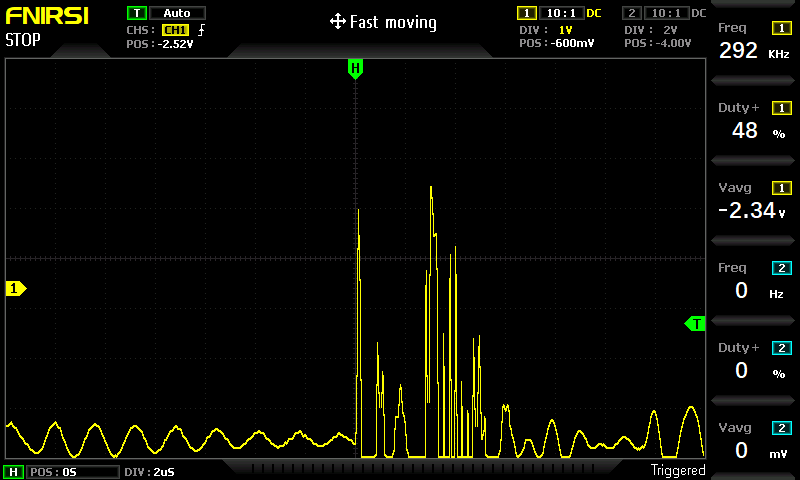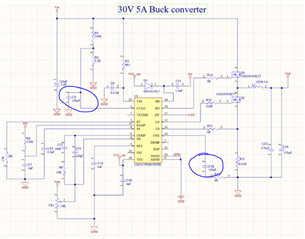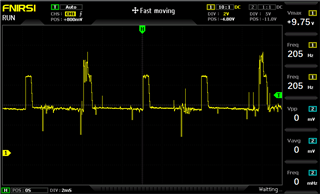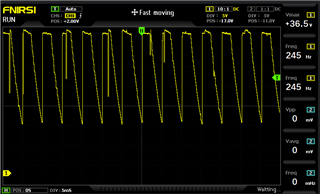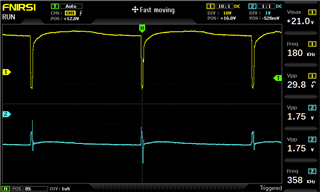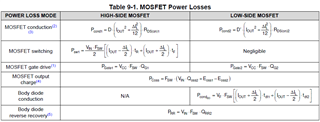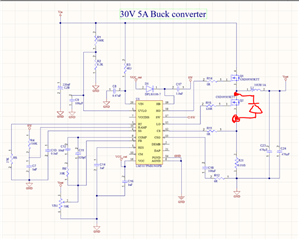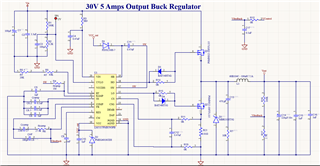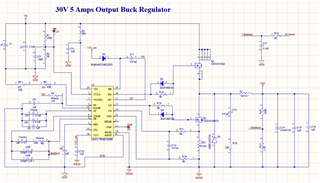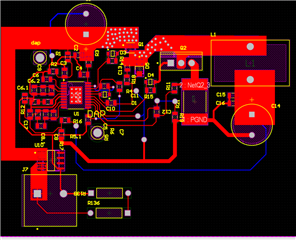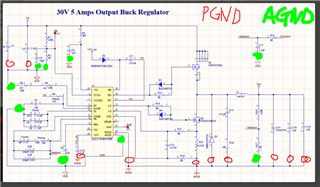Other Parts Discussed in Thread: CSD19505KTT, CSD19538Q2, CSD18536KCS
I am working with the LM5117 and i have failed to get the output signal to the FETS.
Below is my circuiit diagram with values computed with the LM5117 Quick calc spreadsheet.
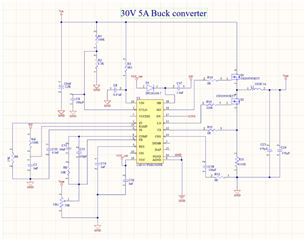
I have measured the following volatges UVLO - 2.5V, RT - 1.2V, SW - 5.3V , VCC - 7.4V, RES, 0V and SS = 0V
Below are the scope shots showing behaviour at some pins.
HO
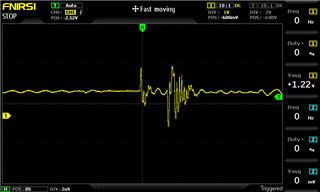
LO
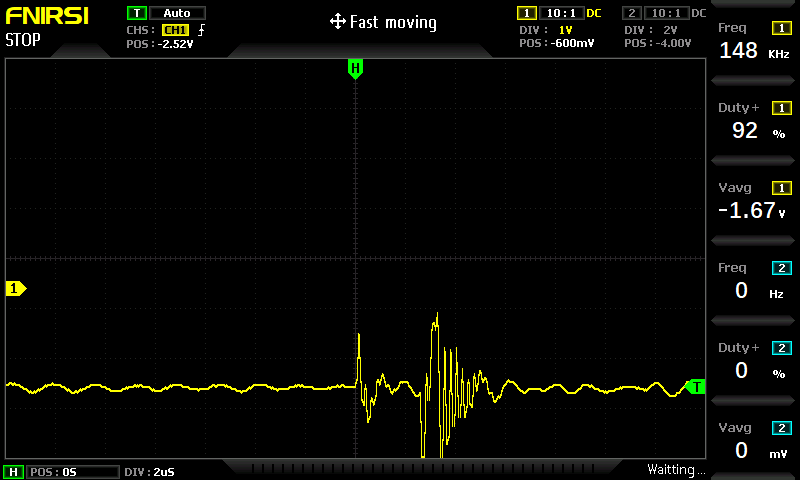
RES
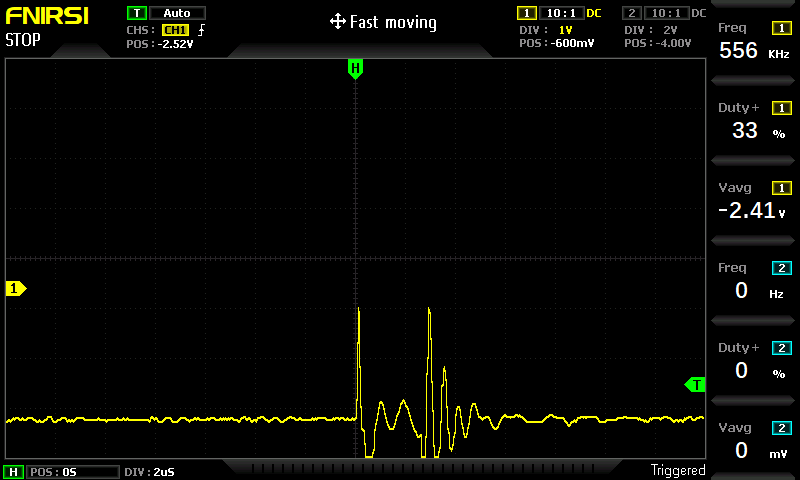
SS
